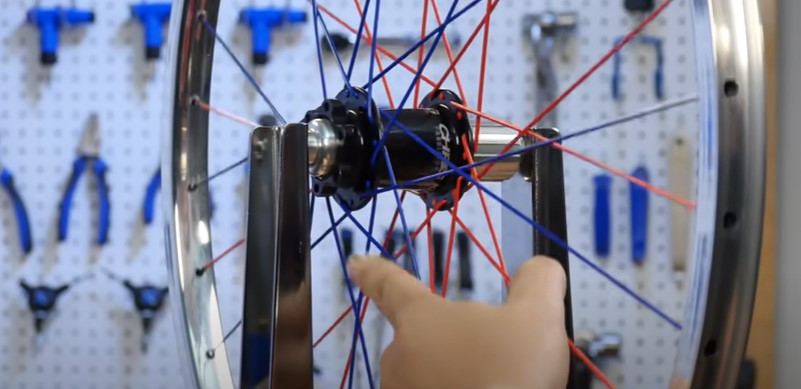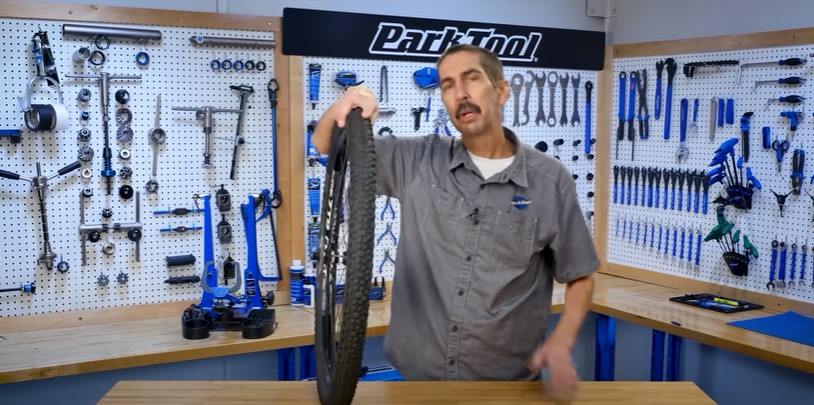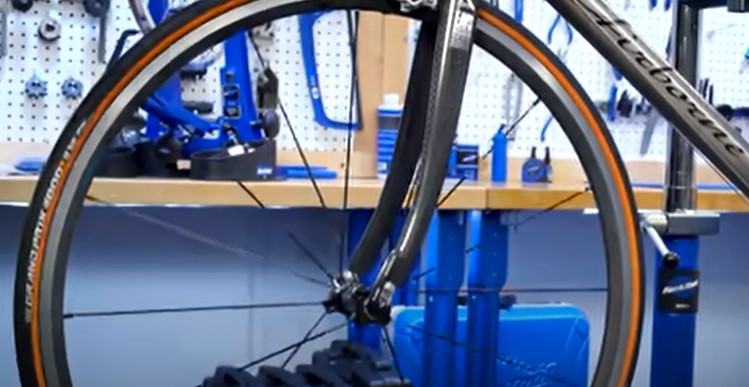Over time, bike wheels can become damaged and the rims can become out of true, leading to an unstable and dangerous ride. Truing the wheel involves adjusting the spokes to bring the rim back into alignment.
So, how much does it cost to true a bike wheel? You’ll find out that here and more.
How Much Does It Cost?
It is possible to true a bike wheel at home using a bike-specific adjustable wrench and screwdriver set, which can cost around $15 to $30.
Tools Required For Truing a Bike Wheel
To true a bike wheel, you will need a few specialized tools. The most important tool is a spoke wrench, which is used to adjust the tension of the spokes that run from the hub to the rim. A truing stand is also helpful, as it provides a stable platform to hold the wheel while you make adjustments.
Other tools that may be necessary include a nipple driver, which helps you turn the spoke nipples to adjust the tension, and a spoke tensiometer, which measures the tension of the spokes to ensure they are evenly adjusted. In addition, a rag or cleaning brush can be helpful for removing any dirt or debris from the wheel before you begin.
Truing a bike wheel requires some skill and practice, so it may be helpful to watch tutorials or seek guidance from an experienced bike mechanic before attempting it yourself.

How To Know That Your Bike Needs Some Truing
There are a few signs that can indicate that your bike’s wheels may need truing.
Wobbling or bouncing: If your bike’s wheel wobbles or bounces while spinning, it’s a sign that it’s not true. This can make riding uncomfortable and affect the bike’s handling.
Rubbing or scraping noise: If you hear rubbing or scraping noise when you ride, it could be because the wheel is not true, and the rim is rubbing against the brake pads.
Brake pad wear: If you notice uneven wear on the brake pads, it could be due to a wheel that’s not true. One side of the brake pads may wear faster than the other because the wheel is not spinning straight.
Visual inspection: If you look closely at the wheel, you may notice that it’s not spinning straight. One side of the wheel may be closer to the brake pads than the other, or the rim may have a noticeable wobble.
If you notice any of these signs, it’s a good idea to have your bike’s wheels checked by a professional mechanic. Truing a wheel requires some specialized tools and skills, so it’s often best to leave it to the experts.

Guide To Truing a Bike Wheel at Home
Truing a bike wheel at home can be a useful skill to have, especially if you want to save money on bike repairs and maintenance. Here’s a step-by-step guide on how to true a bike wheel at home:
- Inspect the wheel: Before you start, inspect the wheel for any damage or cracks. If the wheel is severely damaged, it may need to be replaced.
- Remove the wheel: Remove the wheel from the bike and mount it onto a truing stand. If you don’t have a truing stand, you can use the frame of the bike as a makeshift stand.
- Identify the problem areas: Spin the wheel and look for areas that are out of true. You can use a marker to mark these areas.
- Adjust the spokes: Use a spoke wrench to adjust the tension of the spokes in the affected area. Tightening the spokes on one side of the wheel will pull the rim towards that side, while loosening the spokes on the opposite side will push the rim away from that side.

- Recheck: After making adjustments, spin the wheel again and check for any improvement. Continue making small adjustments until the wheel is true.
- Check the tension: Once the wheel is true, check the tension of all the spokes to ensure they are evenly tightened. A spoke tensiometer can be helpful for this.
- Reinstall the wheel: Finally, reinstall the wheel onto the bike, making sure it’s securely in place.
Important Considerations When Adjusting Spoke Tension for Truing a Bike Wheel
Here are a few things to remember when loosening or tightening the spokes while truing a bike wheel:
Make small adjustments: It’s best to make small adjustments to the spokes, no more than a quarter turn at a time. This will help you avoid over-correcting and making the wheel worse.
Work opposite sides: When adjusting the spokes, work on opposite sides of the wheel. For example, if the wheel is rubbing on the left side, tighten the spokes on the right side and loosen the spokes on the left side.

Check the dish: The dish refers to the alignment of the wheel between the hub and the rim. It’s important to check the dish periodically while truing the wheel to ensure that it’s still centered.
Use a marker: Using a marker or some other visual aid can help you keep track of which spokes you’ve adjusted and which ones you haven’t. It’s easy to lose track when working on a complex wheel.
Check the tension: Once the wheel is true, check the tension of all the spokes to ensure they are evenly tightened. This will help prevent the wheel from going out of true again.
Are Mistakes Allowed When Truing a Bike Wheel?
Mistakes can be common when truing a bike wheel, especially if you’re new to it. It’s easy to over-correct or make small mistakes that can cause the wheel to become worse. However, with practice and patience, truing a bike wheel can become easier, and mistakes can be minimized.

Frequently Asked Questions
- How easy is it to true a bike wheel?
Truing a bike wheel can be challenging, especially for beginners. It requires patience, attention to detail, and practice. However, with the right tools and guidance, anyone can learn to true a bike wheel.
- What is the average time it takes to true a bike wheel?
It depends on the extent of the wheel’s misalignment and your experience. It can take anywhere from 30 minutes to an hour or more to true a bike wheel.
- How do you true a bike wheel with disc brakes?
The process of truing a bike wheel with disc brakes is the same as with rim brakes, but you may need to remove the rotor to get better access to the spokes.
- Is it possible to true a bike wheel without a truing stand?
Yes, you can true a bike wheel without a truing stand, but it may be more difficult to achieve precise results. You can use your bike frame as a makeshift stand, or even a zip tie as an
- What causes bike wheels to go out of true?
Bike wheels can go out of true due to a variety of reasons, including normal wear and tear, impact from hitting potholes or curbs, and uneven spoke tension.
indicator.
- Can you true a wheel with the tire on?
Yes, you can true a wheel with the tire on, but it may be more difficult to access the spokes. You’ll need to deflate the tire to make small adjustments.
- Is wheel truing necessary?
Yes, wheel truing is necessary to maintain proper wheel alignment and prevent further damage to the wheel and other bike components. A misaligned wheel can cause poor handling and affect the overall performance of the bike.
- Is it safe to ride a bike with a wobbly wheel?
It is not recommended to ride a bike with a wobbly wheel as it can cause further damage to the wheel, bike frame, or other components, and may even result in a crash.
Conclusion
Whether to true a wheel or buy a new one depends on the extent of the damage to the wheel and your budget. In many cases, it is possible to true a wheel and restore it to its original alignment, especially if the damage is minimal.
However, if the wheel is severely damaged, has been ridden for a long time without maintenance, or if the cost of repairing the wheel is close to the cost of a new one, it may be more cost-effective to buy a new wheel.

